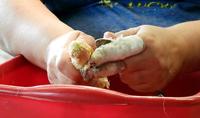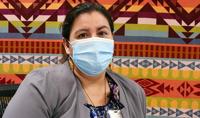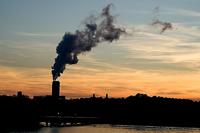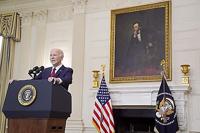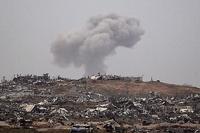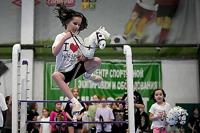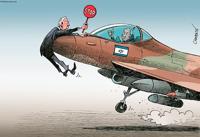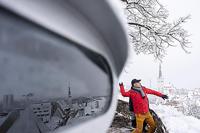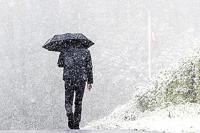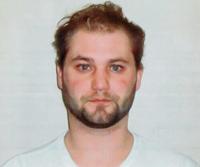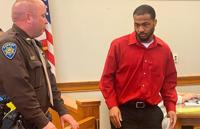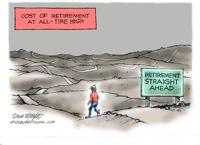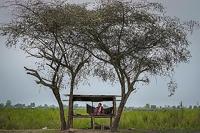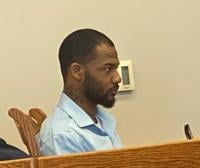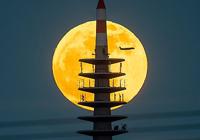WINNEBAGO — On a muggy August afternoon, members of the Winnebago Tribe in Northeast Nebraska gathered to clean heritage corn and dry it for the coming winter. Some will be given to relatives. Some will be used in soup to warm tribal members when the Nebraska weather turns brutally cold.
This return to the normal rhythms of Winnebago life feels deeply satisfying to tribal members like Keely Purcell. A year ago, Purcell sat lonely in her Iowa living room, staying home, working hard to keep her immunocompromised husband and young children safe.
Now she’s cleaning corn in this shed and laughing with her friend Elaine Rice, who is like an auntie to her, a de facto relative in the way that tribe is family to many Indigenous people.
Purcell, Rice and many other tribal members feel comfortable in the shed for a simple reason: Nearly everyone here is vaccinated. As Nebraska struggles to get its rural residents vaccinated, Native Americans living in rural places here have gotten jabbed at extremely high rates.
Case in point: 76% of Winnebago Tribe members 12 and older are now fully vaccinated, according to the Twelve Clans Unity Hospital. The nearby Omaha Tribe has 75% of its eligible members fully vaxxed, including nearly every tribal employee, said Sarah Rowland, director of Macy’s Curtis Health Center.
Those numbers are markedly higher than the United States as a whole, and stunningly higher than any single other rural Nebraska spot. Most rural Nebraska communities have vaccinated between a third and a half of their eligible residents, according to CDC data.
The vaccination push by the Winnebago and Omaha tribes, whose reservations border one another in rural Northeast Nebraska, has led to an eye-opening fact: Tiny Thurston County, by far the poorest county in Nebraska, is also its most vaccinated.
Nearly three-quarters of eligible residents have been vaccinated there as of Oct. 6, beating even the metro counties of Douglas and Lancaster, which both have vaccinated roughly 70% of eligible residents.
An inborn sense of community and family, as well as an intensely local education push, have driven large numbers of tribal members to embrace the vaccines.
"When smallpox came around, we didn’t have anything to protect us. We didn’t know," Purcell said, referencing the virus that killed as many as 90% of Native Americans in the decades after traders and settlers brought it here. "But, this time, in the middle of all this, knowing that the virus could kill our people, we have a vaccine. Take it.”
Tribal support for vaccination has been strong both because of 21st century technology and an age-old respect for tribal elders and community safety, according to tribal members.
Mona Zuffante, the tribe’s public health director, co-hosted weekly Facebook Live presentations starting early in the pandemic, sharing vital information as tribal officials continued to learn more about the virus.
"We watched the news. We saw the stories about the cruise ships. We knew it was coming. We’re not an island. It's coming here. It started on the coasts and would be here," Zuffante said.
Emmy Scott and her brother Aaron Scott took it upon themselves to help tribal officials by providing their own social media updates. With more than 6,600 followers on Twitter, Emmy Scott shared Winnebago updates, such as mask mandate information and status on isolation and quarantine.
"Since I knew that most younger people followed me on Twitter, I thought I'd share information that way," she said.
The tribe also reverted to tried-and-true ways to get its message out. Tribal leaders sent paper fliers to elders and put them in children’s lunch bags.
As COVID-19 spread through Nebraska, both the Winnebago and Omaha implemented actions to mitigate its impact on the reservations. The tribes mandated facemasks. They quickly shut down schools, eventually moving to virtual learning. Businesses closed temporarily, and employees started working from home. In May 2020, the tribal town of Macy put in checkpoints at all four of its entrances and enforced a curfew from 8 p.m. to 5 a.m. to control the virus’ spread.
The checkpoints were removed this spring; the curfew revoked. Both communities' schools have returned to in-school learning.
In Winnebago, the sense of family and community helped contain the spread of COVID, Zuffante said, leading to lower death rates than elsewhere in Nebraska. Still, Winnebago lost five people to COVID-related deaths, while the Omaha Tribe suffered at least eight deaths.
“When you’d see your uncle walking down the street, you’d go, ‘Hmmm, what’s he doing out there?’ ” she said.
In one case, it was an elder on his way to pick up mail. “Getting your mail? Give me those keys. The tribe will get your mail,” she said.
Once vaccines became available to both tribes in December, health officials prioritized who would receive the first shots. Elders, language keepers and culture leaders were first in line, along with health care workers and first responders.
Following a prayer ceremony, the Winnebago clinic started to administer its first doses. Zuffante, who is also an EMT, was among the first to receive the vaccine.
“We were able to show its (safety),” she said. “We could say we had all the side effects and we’re OK. It helped a lot with people.”
Hospital staff and tribal leaders decided to move vaccinations from the cramped clinic to the spacious school gymnasium where, starting Jan. 6, they offered jabs each Wednesday.
“We had 120 people that first day,” Zuffante said.
There, they vaccinated an average of 150 people each week through the spring and early summer until almost every adult was vaccinated. More recently, they have moved vaccination back to the clinic, where they still average about 25 newly vaccinated people per week.
The elders showed the importance of the vaccine to Winnebago, she said. At one of the tribe’s first clinics, one woman worried that she was too old to get the vaccine, Zuffante said. But she decided to go through with it, because she wanted to hold her baby granddaughter after not being able to hold her for most of 2020.
At another mass clinic, Zuffante watched the elders who had been vaccinated earlier in the day lingering together in a corner of the gym. The senior center was still closed. Some hadn’t spoken in months.
“It was so powerful, because you could tell how much they missed each other. ... I asked a nurse how long she told them they had to stay after receiving their shots. ‘15 minutes,’ she said. What time was that? ‘An hour. I was going to kick them out.’ ”
Nah, Zuffante said. Leave them be.
“It was the safest place for them to be. They hugged. Some of them were 6 feet apart and yelling at one another. It was nice to see it.”
Tribal members realized the value of vaccinations outweighed the ills of history, Zuffante said.
“Historically, we’ve really gone through so much with our people, from smallpox to always being the last ones to get anything,” she said. “And, I think, even given that, then we were among the first in line for vaccines, and we’re like, ‘OK, what’s going on here?’ But, it kind of reminded people that things are changing.
“It affected us so much. I’ve never experienced where I couldn’t go to college, or go to religious ceremonies. Or even be around family. We were all in the same boat. We’re a resilient people, and we’ve gone through all these things up to this point.”
Tribal leaders are continuing a push to get their vaccination numbers even higher.
After having had to cancel the public portion of Winnebago’s annual homecoming celebration powwow in 2020 because of the pandemic, the tribe required everyone participating and attending this year’s event to show proof of vaccination. The Omaha Tribe also hosted its August powwow with a mask mandate and social distance requirements. Both events proved successful. And safe.
“Not a single case of COVID was connected to the powwow,” Zuffante said.
Non-Native communities may be better served by embracing the Winnebago and Omaha concept of family and community, Purcell said.
“This may sound cheesy, but it’s safer here than it is in cities,” she said. “... People talk about strong community. Here, we know who we can depend on. Out there, that might be your neighbor you wave to, but it’s not your cousin. That’s not your auntie. That’s not your auntie’s best friend, or grandma who lives down the street. We have that here. We have not lost our tribal community. You’re mine. I’m yours.”
Purcell’s own life started to return to some version of normal when she received a call from the reservation earlier this year. The tribe had two doses of the Pfizer vaccine available for her family. Could she come, now?
Purcell and her 25-year-old son, Dylan, jumped in the family car and sped three hours to the Twelve Clans Unity Hospital. Eventually her entire family, including her White husband, received their vaccines from the tribe.
And, after enduring more than a year isolated from the tribe, the Purcell family made another COVID-19-inspired decision. This summer, they packed their belongings in Iowa and moved back to the reservation. Because, more than ever, Winnebago feels like home.
“"I missed this last year," Purcell said as she sat in a shed, shucking corn and laughing with the lifelong pals she regards as loved ones. "There's something special about corn season. Sitting here, with friends and family, I missed this."
The Flatwater Free Press is Nebraska’s first independent, nonprofit newsroom focused on investigations and feature stories that matter.




